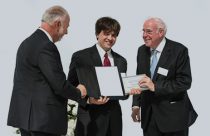Clarivate Analytics Enlists the Highly Cited Researchers of 2018

Publication is an essential part of any researcher’s career. However, citations matter just as much, if not more. A high number of widely cited publications shows that you as a researcher are making important contributions to your field. Clarivate Analytics publishes a list of the most highly cited researchers every year. This list helps to highlight influential researchers around the globe. As 2018 draws to a close, we look at whose publications made it to the Global Highly Cited Researchers 2018 List and what that reveals about trends in global research today.
Who Were the Highly Cited Researchers of 2018?
Clarivate Analytics uses the Web of Science as the basis for the listings of researchers whose citation records position them in the top 1% by citations for their field and year. This year’s list ranks more than 4,000 researchers in 21 different fields. Like last year, the top three countries are the United States, the United Kingdom, and China. The US has 2,639 authors, while the UK has 546 and China (mainland) is closing the ranks with 482. China doubled the number of highly cited authors compared to the previous year.
The Superstars of the List
The 2018 list includes 17 Nobel laureates, two of whom were announced this year. James P. Allison, who is the Professor and Chair of the Department of Immunology at the M.D. Anderson Cancer Center at the University of Texas received a Nobel in Physiology or Medicine for his discovery of a novel cancer therapy. William D. Nordhaus, Sterling Professor of Economics at Yale University, received a Nobel in Economics for his work integrating climate change into long-run macroeconomic analysis. The report also identifies 56 researchers who citation analysis reveals are potential Nobel Prize recipients.
What’s New this Year?
The 2018 report differs from past reports by recognizing a new category for researchers who publish across multiple fields. David Pendlebury, Senior Citation Analyst at Clarivate Analytics, explained that the new cross-field category will recognize a few selected researchers. These researchers may have substantial influence in several fields but do not have enough highly cited papers in any one field to be chosen. Sweden (53%), Austria (53%), Singapore (47%), Denmark (47%), China (43%) and South Korea (42%) saw more than 40% of their Highly Cited Researchers in the cross-field category.
Global Trends in Research
The List reveals some interesting facts about global research trends. Australia has more than doubled its number of Highly Cited Researchers in the past four years, growing from 80 in 2014 to 170 in 2018. Meanwhile, China has overtaken Germany to rank third on the list of countries/regions. The Chinese Academy of Sciences rose to fourth place in the list of institutes with the most Highly Cited Researchers, after Harvard University, the National Institutes of Health, and Stanford University. At the same time, research talent remains highly concentrated. Although the list represents 60 countries, 80% of the Highly Cited Researchers came from just ten countries, and 70% from the top five.
The List offers researchers worldwide insight into the top institutions and journals, as well as showing how those trends are changing over time. Clarivate Analytics also offers the annual Journal Citations Report which helps researchers identify top journals for their publishing needs. Carefully targeting your publications to ensure that your work is read- and hopefully cited- by other top researchers in the field is a key component to truly launching your career. Reports like these offer critical guides for both young and experienced researchers alike.
Did anything in the 2018 Global Highly Cited Researchers report surprise you? What other trends do you see emerging? Let us know your thoughts in the comments below.








